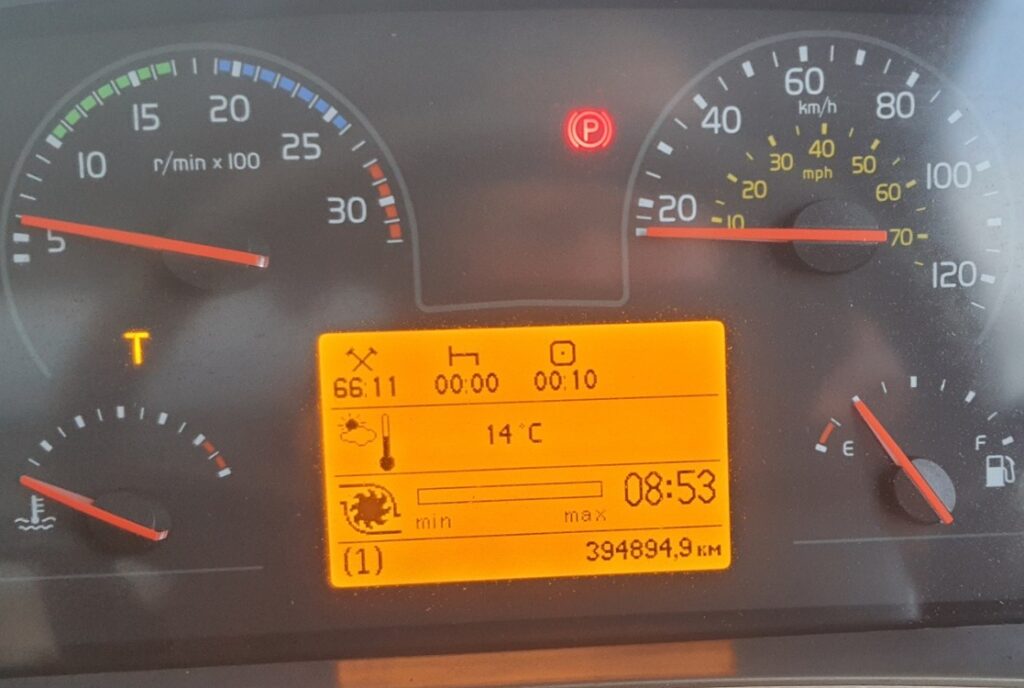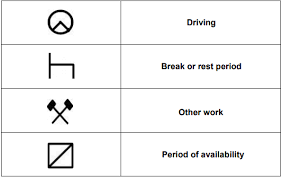The current Working Time Directive (WTD) legislation for EU countries was introduced in 2011. Many drivers and their employers still struggle to understand the complex and confusing rules set by Government especially when combining it with EU drivers’ hours legislation.
If you drive a goods vehicle in the UK or EU, there are complicated rules that will apply to your journey that govern how many hours you can drive for and the number of rests you take. These rules therefore apply to all drivers in the waste management industry. But how should you record your hours spent driving and when do you need to take a rest break?
If the vehicle that you drive exceeds 3.5 tonnes and where the vehicle is used within the UK or between the UK and other EU countries, Assimilated Rules (formerly known as EU Rules) will apply to your HGV driver hours.
Assimilated Rules (formerly EU Driver Hours Rules)
Assimilated Rules, also known as AETR, set out that a driver must record all hours on a tachograph and must not drive more than:
- 9 hours in a day (this can increase to 10 hours twice a week)
- 56 hours in a week
- 90 hours in any 2 consecutive weeks
Assimilated Rules on Breaks
The key points of the assimilated rules on breaks and rest are that a driver must take:
- at least 11 hours rest every day – you can reduce this to 9 hours rest 3 times between any 2 weekly rest periods
- an unbroken rest period of 45 hours every week – you can reduce this to 24 hours every other week
- a break or breaks totalling at least 45 minutes after no more than 4 hours 30 minutes driving
- your weekly rest after 6 consecutive 24-hour periods of working, starting from the end of the last weekly rest period taken
For example, if a driver starts work at 8am on day one then by 8am on day two, a HGV driver’s hours must have completed either:
- 11 hours uninterrupted regular daily rest period
- 12 hours split daily rest period taken in two separate periods (min 3 hours and min 9 hours)
OR
- A reduced daily rest period, only if entitled, of a minimum of 9 hours (but less than 11 hours) uninterrupted
Working Time Directive Rules
Where the EU Driver Hours rules do not apply to a goods vehicle, the GB driver Working Time Directive rules come in to force, however in a situation where both rules apply the EU driver hours requirements take precedence.
This is because driving an HGV carries more risks and is considered to be more difficult than many other types of work. As such, the break requirements in the EU Driver Hours rules are stricter than the working time directive rules.

Under the working time directive driver hours must not exceed 48 hours per week (average). This is usually calculated over a rolling 17-week period. No working week should exceed 60 hours and there is a maximum working time of 10 hours if night work is carried out. Under a collective or workforce agreement the 17-week rolling average may be extended to 26 weeks and the maximum hours of night work can also be extended.
WTD Breaks
Drivers following the working time directive must not work for more than 6 hours without a break, and that break should last at least 15 minutes. If working for a total of between 6 and 9 hours, you must take a 30-minute break.
This also applies to mobile workers. The 30 minutes of break time can be made up of two 15-minute breaks. If driver hours exceed 9 hours, then a break of 45 minutes must be taken. And beyond that, if a shift contains more than 9 hours of working time a break period totalling 45 minutes must take place.
Thankfully, under the working time directive (WTD), rest requirements are the same as the EU driver hours rest rules. In both cases, rest breaks can currently be taken inside their HGV as long as the time is not spent doing any other work and is used to rest and relax.
So, now that that is all clear (!) what does this mean for HGV drivers and specifically drivers of trucks supplied by MHF (UK) Ltd?
Working time or assimilated hours can be classed as the time spent carrying out duties that are linked to your transport operation, and there are many things that this would include, for example,
- Driving
- Loading and unloading
- Industry specific driver training
- Vehicle cleaning and maintenance
- Supervising the loading and unloading of goods relating to the vehicle
- Daily vehicle defect check and report
- Time spent waiting for duties to commence, when the driver is required to be with the vehicle
What is not included in working time for drivers is time spent travelling between home and the normal place of work. Similarly, rest breaks and rest periods are not classed as working time.

Exclusions that apply to the recording of hours under both Assimilated Rules (AETR) and the working time directive are:
- Driving a hire vehicle for the purpose of delivery or collection
- Empty vehicles being driven to or from a place of repair of annual test
- Driving a vehicle for the purpose of moving it between depots
- Driving a new vehicle for the purpose of collection or delivery
- Vehicles driven to be scrapped
Driving under Assimilated Rules and WTD
If you work partly under assimilated (previously called EU rules) or AETR rules and partly under GB domestic rules during a day or a week you must:
- take assimilated or AETR daily rest periods, as well as a weekly rest period
- not count the time you spend driving under assimilated or AETR rules as an off-duty period under GB domestic rules
- understand that driving under GB domestic rules counts as ‘other work’, not as a break or rest period
- understand that driving or being on duty under assimilated or AETR rules counts towards the driving and duty limits under GB domestic rules
Full guidance can be found on the GOV.UK website
And finally…
It must be stressed that in any situation, the health, safety and welfare of drivers should not be compromised at any time. The assimilated rules and the working time directive exist to protect road safety for everyone and drivers’ working conditions.
Both AETR and GB drivers’ hours rules automatically cease to apply in emergency situations where immediate preventative action is needed to avoid, amongst other things, danger to the life of people.
The GOV.UK website has detailed information about all aspects driving regulations. The information on their website is updated frequently and should be used for any queries relating to HGV driving rules under Assimilated Rules and the WTD.



